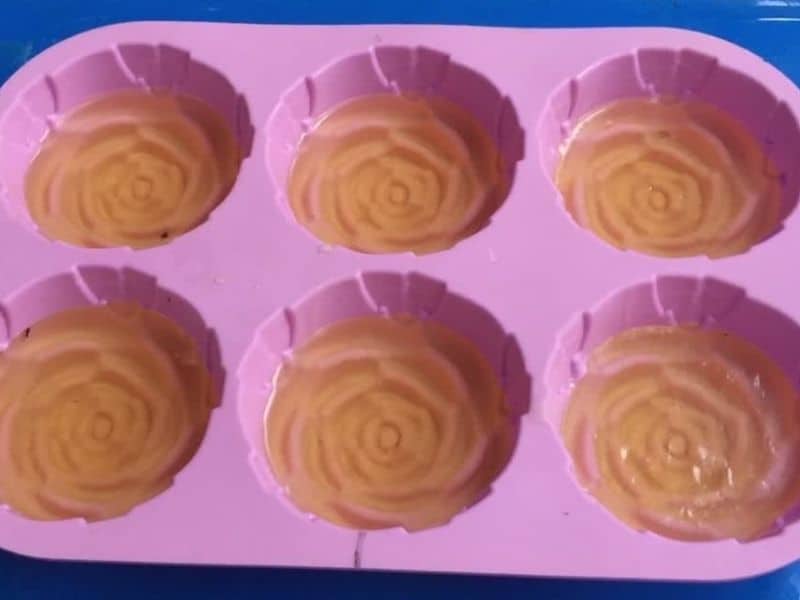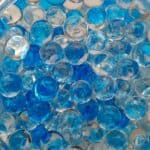Melt and pour soap making has gained popularity due to its simplicity and creative possibilities. But, have you ever wondered if your handmade soaps need preservatives to stay fresh? In this article, we’ll dive into the world of melt and pour soap and preservatives, discussing factors that affect soap’s shelf life and how to properly store your creations.
Melt and pour soap generally doesn’t require added preservatives, as most bases already include them. However, proper storage, understanding factors affecting shelf life, and using natural alternatives when needed can help maintain freshness and extend your soap’s life.
When crafting melt and pour soap, it’s essential to be aware of the ingredients used, especially if they’re perishable. Ensure your soap base has built-in preservatives to prevent bacterial growth and degradation.
Remember to store your soaps in cool, dry conditions, away from direct sunlight and moisture. By following these guidelines and exploring natural alternatives when appropriate, you can enjoy creating beautiful, customized soaps that not only look and smell great but also stay fresh and last longer.
Melt and Pour Soap and Preservatives
Melt and pour soap typically doesn’t require additional preservatives, as most commercial bases already contain them to prevent microbial growth and ensure a longer shelf life.
Several factors influence the longevity of melt and pour soap:
- Quality of ingredients: Higher quality ingredients last longer.
- Storage conditions: Proper storage conditions help preserve freshness.
- Humidity: Excess humidity can cause soap to degrade faster.
- Exposure to sunlight: Prolonged sun exposure can cause colors to fade and shorten shelf life.
- Presence of additives: Certain additives, like fresh ingredients, might require preservatives.
Best practices for storage
Follow these storage tips for longer-lasting soap:
- Store in a cool, dry place away from heat sources.
- Keep soap wrapped or in airtight containers to prevent moisture absorption.
- Use opaque containers to minimize light exposure.
- Ensure the storage area is clean and free from contaminants.
Melt and Pour Soap Basics
Melt and pour soap is a premade soap base made from glycerin and various other ingredients. To create soap, simply melt the base, mix in desired colors and fragrances, and pour into molds to set.
Melt and pour soap is popular for several reasons:
- User-friendly: Ideal for beginners due to its simplicity.
- Quick results: Soap sets within hours, allowing for faster use or gifting.
- No lye handling: Eliminates the need to work with potentially dangerous chemicals.
- Customizable: Easily add colors, fragrances, and additives for unique creations.
- Creative outlet: Offers endless possibilities for shapes, patterns, and designs.
Common ingredients
Ingredients found in many melt and pour soap bases include:
- Glycerin: A natural humectant that attracts moisture to the skin.
- Water: Helps dissolve and combine ingredients.
- Sodium stearate: A cleansing agent that creates soap’s lather.
- Sodium myristate: Contributes to the soap’s hardness and stability.
- Sorbitol: A sugar alcohol that adds moisture and helps create a smooth texture.
Understanding Preservatives
Preservatives serve to inhibit the growth of bacteria, mold, and yeast in cosmetic products. They protect product quality and ensure a longer shelf life.
Various preservatives are used in the cosmetic industry, including:
- Parabens: Effective against a wide range of microorganisms but controversial due to potential health concerns.
- Phenoxyethanol: A versatile and gentle preservative suitable for sensitive skin.
- Sodium benzoate: A food-grade preservative often used in natural formulations.
- Potassium sorbate: Works well in acidic products and pairs with other preservatives for increased effectiveness.
- Benzyl alcohol: A natural preservative derived from plants, effective against bacteria and yeast.
When to use them preservatives
Consider using preservatives when:
- Water or moisture is present in the product, increasing the risk of bacterial growth.
- The product has a high risk of contamination from frequent handling.
- A longer shelf life is desired, especially for handmade items.
- Fresh, perishable ingredients like fruits, vegetables, or herbs are used.
Natural Alternatives to Preservatives
Natural alternatives to preservatives offer several advantages:
- Generally safer and gentler on the skin
- Environmentally friendly
- Ideal for those seeking chemical-free options
- May have additional skin benefits
Common natural ingredients
Some natural alternatives that can help extend soap’s life include:
- Grapefruit seed extract: A potent antioxidant with antimicrobial properties
- Rosemary oleoresin extract: Effective against oxidation and rancidity
- Vitamin E: An antioxidant that helps protect oils from going rancid
- Honey: A natural humectant with antimicrobial properties
How to use them in soap
To use natural alternatives in melt and pour soap:
- Choose a compatible ingredient based on your soap’s composition.
- Follow the recommended usage rate for the specific ingredient.
- Mix the natural preservative into the soap base when adding colors and fragrances.
- Be aware that natural alternatives may not be as effective as synthetic preservatives, potentially shortening soap’s shelf life.
Properly Wrapping and Storing Melt and Pour Soap
Properly wrapping and storing melt and pour soap is vital for a longer shelf life and better quality. Follow these steps to keep your soaps fresh and appealing.
- Allow soap to set: Wait for your soap to harden in the mold before wrapping or storing. Follow the manufacturer’s guidelines or wait overnight.
- Cleanliness: Ensure your hands and workspace are clean before handling soap. Wearing gloves can minimize direct contact.
- Use shrink wrap or plastic bags: These materials create a barrier, protecting soap from dust, moisture, and bacteria. For shrink wrap, use a heat gun or hairdryer to fit it snugly around the soap. For plastic bags, seal them tightly.
- Decorative tins or boxes: These containers shield soap from light and provide an attractive presentation. Line the tin or box with wax paper or parchment paper for added protection.
- Store in a cool, dry, dark place: Keep wrapped soaps in a closet or cabinet, away from sunlight, heat, and moisture.
- Label your soaps: Include the date made, ingredients, and other relevant information. This practice helps track your creations and informs recipients if you gift or sell your soaps.
By following these steps, you’ll ensure your melt and pour soaps remain delightful to use while preserving their beauty and functionality.
Tips for Extending Soap’s Life
To extend your soap’s life, follow these handling and storage tips:
- Always use clean tools and equipment when making soap.
- Wash hands before handling soap.
- Store finished soap in a cool, dry place away from direct sunlight and moisture.
Ingredients to avoid
To prolong soap’s shelf life, avoid using ingredients that spoil quickly, such as:
- Fresh fruits and vegetables
- Dairy products
- Unstable oils prone to rancidity
Packaging ideas
Creative packaging can help protect and preserve your soap:
- Use shrink wrap or plastic bags to prevent dust and moisture.
- Package soap in decorative tins or boxes to protect from light.
- Include silica gel packets to absorb excess moisture in packaging.
Frequently Asked Questions
Proper storage, including keeping soap in a cool, dry place away from direct sunlight and moisture, helps maintain freshness and prolongs shelf life.
Natural alternatives may not be as effective as synthetic preservatives, potentially shortening soap’s shelf life.
Packaging, such as shrink wrap, plastic bags, decorative tins, or boxes, can protect soap from dust, moisture, and light, preserving freshness.
Perishable ingredients, like fresh fruits, vegetables, or dairy products, can spoil quickly and shorten the soap’s shelf life.
Tips include using clean tools and equipment, washing hands before handling soap, and storing finished soap in a cool, dry place away from direct sunlight and moisture.
Conclusion
In conclusion, melt and pour soap generally doesn’t require additional preservatives, as most bases already contain them to ensure longevity and quality. However, understanding factors affecting soap’s shelf life and proper storage practices can help you maintain your creations’ freshness.
When choosing natural alternatives to preservatives, remember they may not be as effective as synthetic ones, but they can still offer some benefits. By following the tips and guidelines shared in this article, you’ll be well-equipped to make informed decisions and enjoy your soap-making journey. Keep experimenting, stay creative, and have fun crafting beautiful and long-lasting soaps!






